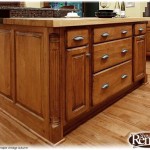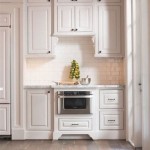Stripping Paint From Old Kitchen Cabinets
Refurbishing old kitchen cabinets can be a rewarding project, breathing new life into a tired space. Often, the first step involves removing layers of old paint or varnish to reveal the original wood underneath. While this task can seem daunting, it is achievable with the right tools and techniques. This article provides a comprehensive guide on stripping paint from old kitchen cabinets, outlining key considerations and steps for a successful project.
Understanding Paint Strippers
Paint strippers are chemicals specifically designed to soften and dissolve paint, allowing it to be easily removed. Choosing the right stripper is crucial, as different types are effective on different paint types and surfaces. Here are some common types of paint strippers:
- Chemical Strippers: These are powerful solutions that work quickly and are effective on multiple paint types. They are available in liquid, gel, and paste forms. Chemical strippers contain strong chemicals, so they require proper ventilation and safety precautions during use.
- Natural Strippers: These are made from plant-based ingredients and are considered safer alternatives to chemical strippers. They are less aggressive and may take longer to work, but are a good option for those concerned about chemical fumes.
When selecting a paint stripper, consider the following factors:
- Type of paint: Different strippers are effective on different types of paint, such as oil-based, latex, or epoxy. Check the product label for compatibility.
- Surface material: Strippers can affect various surfaces differently. Wood, metal, and plastic react differently. Choose a stripper specifically designed for the type of material you are working with.
- Safety precautions: Always read and follow the manufacturer's instructions regarding safety precautions, including ventilation, gloves, and eye protection.
Preparation and Safety
Before attempting to strip paint, adequate preparation is essential to ensure a safe and successful outcome. The following steps should be taken:
- Clear the Area: Remove all items from the work area, including appliances, countertops, and backsplashes. Cover the surrounding area with drop cloths to protect it from spills and drips.
- Ventilation: Ensure good ventilation by opening windows and using fans. Wear a respirator mask to prevent inhaling fumes from the stripper.
- Protective Gear: Wear heavy-duty gloves and eye protection to avoid contact with the stripper. Long sleeves and pants are also advisable.
- Test Spot: Apply a small amount of stripper to an inconspicuous area of the cabinet to check its effectiveness and potential damage to the finish.
Stripping the Paint
Once the preparation is complete, you can start stripping the paint from the cabinets:
- Apply the Stripper: Using a brush or scraper, apply a thick layer of stripper to the cabinet's surface. Make sure to cover all areas evenly.
- Dwell Time: Allow the stripper to sit for the time specified on the product label. This is typically between 15 and 30 minutes, but may vary depending on the stripper and paint thickness.
- Scrape and Remove: Once the dwell time is complete, use a scraper to remove the softened paint. Start from the edges and work your way inward, scraping in a single direction to avoid damaging the wood.
- Repeat if Necessary: For stubborn layers of paint, you may need to apply the stripper multiple times and scrape again. Be patient and persistent.
- Neutralize the Stripper: After removing the paint, neutralize the stripper by following the manufacturer's instructions. This is typically done by wiping the surface with a damp cloth or applying a neutralizing solution.
Post-Stripping Cleaning and Refinishing
After stripping the paint, it is essential to thoroughly clean the cabinets to remove any leftover stripper residue and prepare them for refinishing.
- Wash and Rinse: Use a cleaning solution, such as trisodium phosphate (TSP), to wash the cabinets and remove any leftover stripper. Rinse thoroughly with water and allow the cabinets to dry completely.
- Sanding: Sand the cabinets to smooth any rough spots and prepare the surface for the next step. Use progressively finer grit sandpaper to achieve a smooth finish.
- Finishing Touches: Once the cabinets are clean and sanded, you can apply a new finish, such as paint, stain, or varnish, to achieve your desired look.
Stripping paint from old kitchen cabinets requires careful planning, preparation, and patience. By following the steps and safety guidelines outlined above, you can successfully remove old paint and prepare your cabinets for a fresh new look. Remember to always prioritize safety and follow the manufacturer's instructions for the chosen paint stripper.

How To Strip Paint Off Kitchen Cabinets And Furniture

How To Strip Paint Off Kitchen Cabinets And Furniture

How To Strip Old Kitchen Cabinets

How To Strip Paint Off Kitchen Cabinets And Furniture

How To Strip Paint Off Kitchen Cabinets And Furniture

How To Strip Paint Off Kitchen Cabinets And Furniture

How To Strip Paint Off Kitchen Cabinets And Furniture

How To Remove Paint Or Stain From You Kitchen Cabinets Part 1 Of 3

Kitchen Cabinet Refinishing Guide How We Got A Durable Chip Free Finish

Preparing Kitchen Cabinets For Painting Stripping And Sc
Related Posts








